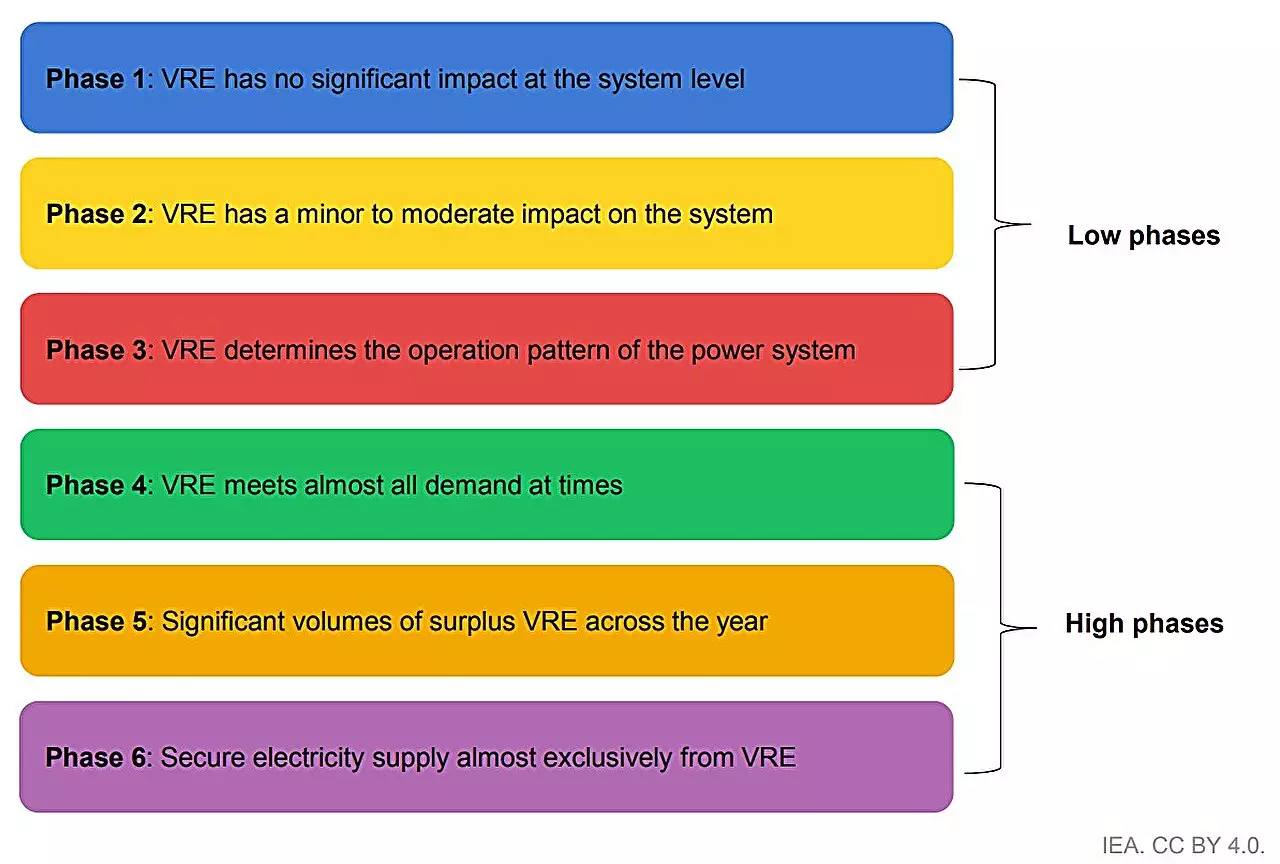In recent years, solar photovoltaic (PV) and wind energy have emerged as leading players in the global shift towards sustainable power generation. A report from the International Energy Agency (IEA) highlights a notable acceleration in the deployment of these renewable technologies, revealing that their combined capacity has more than doubled between 2018 and 2023. The remarkable growth of renewable energy generation is powered largely by favorable government policies and continuing decreases in cost, which together create a conducive environment for investment in this sector. As nations worldwide prioritize energy security and sustainability, the importance of integrating these variable renewable energy (VRE) sources into existing power systems cannot be overstated.
The contribution of solar and wind to decarbonization efforts is profound, especially in the electricity sector, where system emissions can be significantly reduced. By the midpoint of the century, solar and wind are projected to account for about two-thirds of the necessary emissions reductions. However, the challenge lies in effectively integrating these technologies into the existing energy framework. Policymakers must act decisively to ensure the smooth incorporation of solar and wind power, or risk jeopardizing the substantial benefits they offer.
The IEA report emphasizes that the failure to support VRE integration could hamper progress in the existing energy landscape. According to the report’s findings, if countries do not adopt timely measures to facilitate integration, the potential electricity generation from solar and wind sources could be reduced by 15% by 2030. This scenario underscores the critical nature of policy interventions in driving successful energy transitions. Keisuke Sadamori, the IEA’s Director on Energy Markets and Security, articulates the urgency of these measures, stressing that countries which do not prioritize integration will miss out on the full benefits of renewable energy.
A global stocktake of integration efforts across 50 power systems reveals that while significant advances have been made in boosting VRE deployment, the road ahead is fraught with challenges. Countries with currently low levels of renewable energy in their power mix stand to account for two-thirds of the generation growth anticipated by 2030. Fortunately, these nations can enhance their renewable capabilities without the need for overly invasive system changes, instead employing proven strategies such as increasing the flexibility of existing energy assets and improving forecasting methods.
Certain countries, such as Denmark, Ireland, South Australia, and Spain, serve as exemplars for how to successfully navigate the challenges associated with high levels of solar and wind penetration. These “frontrunner” systems have demonstrated innovative approaches to managing fluctuations in renewable output, which vary continually due to factors such as weather changes and time of day. By investing in energy storage technologies and innovative grid solutions, these nations have paved the way for others to follow.
Notably, the report indicates that most of the advanced technological solutions needed to address the stability and flexibility issues that arise from increased VRE deployment are either already mature or nearing readiness. Thus, the focus should not solely be on technological breakthroughs but rather on policy frameworks that encourage the effective implementation of available solutions. This shift requires a reevaluation of the traditional energy planning and operational models, which may no longer suffice in a renewable-heavy energy landscape.
With the pace of renewable energy uptake accelerating, proactive measures from stakeholders around the globe are essential. Policymakers must acknowledge that the successful integration of solar and wind energy into power systems is not just about increasing generation capacity; it is also about ensuring that this capacity is utilized efficiently and reliably. As the world works towards achieving ambitious energy and climate goals, the imperative for collaboration and innovation in energy integration has never been more critical.
The journey towards a sustainable energy future is intertwined with the effective integration of solar and wind technologies into power systems. As highlighted in the IEA report, the opportunity to harness the full potential of renewables hinges on comprehensive planning, robust policy frameworks, and the commitment to embrace change. The time for decisive action is now; the benefits of adopting solar and wind energy are not just environmental but also economic, positioning nations for a resilient and sustainable energy future.


Leave a Reply
You must be logged in to post a comment.